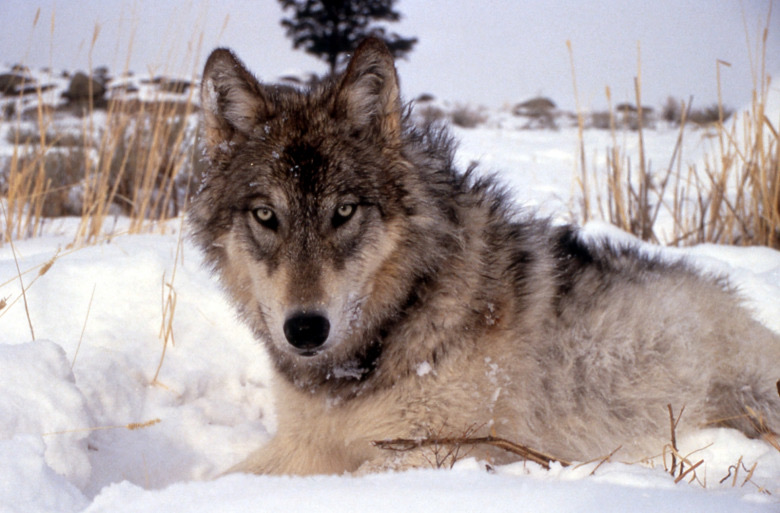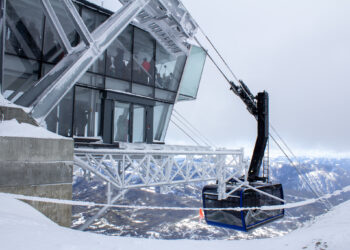25 years after wolf reintroduction

By Todd Wilkinson EBS ENVIRONMENTAL COLUMNIST
Anniversary stories are meant to provide a moment of reflection, not only on where we are, but where we’ve been. Over the years as an environmental journalist covering the Greater Yellowstone Ecosystem, I’ve penned many—about the bi-decade commemorations of the Wilderness Act of 1964, the 50th anniversary of the National Environmental Policy Act this year, the Endangered Species Act, remembering the Yellowstone forest fires of 1988, the birth years of Yellowstone and Grand Teton and even the first Forest Service ranger district on the Shoshone National Forest.
This week 25 years ago wolves were brought back to Yellowstone some 60 years after they had been deliberately exterminated from our first national park and nearly all of the American West.
As Mike Phillips who was the park’s lead wolf biologist at the time and Doug Smith, his successor, have said, giving wolves a second chance was one of the most momentous wildlife conservation actions in history.
Calls for reintroduction, however, go back much further than that. As a young reporter in Jackson Hole, I remember 1987 being a pivotal year. The Fish and Wildlife Service released its wolf recovery plan for the Lower 48, U.S. Rep. Wayne Owens of Utah introduced legislation that sought unsuccessfully to legally compel the federal government to make wolf restoration happen and President Ronald Reagan’s director of the National Park Service was beginning to make waves.
William Penn Mott, former head of the California state parks department, was then in Washington, D.C., and, without warning and chagrin to Republicans, backed reintroduction.
Only eight years later, after much resistance from the ranching and farming industries, some big game wildlife organizations, members of some U.S. senators and members of Congress did it happen. There were a lot of heroes too numerous to name.
One of the people in the trenches was research naturalist Norman Bishop who over the course of his tenure in Yellowstone attended more than 400 public information sessions on wolves. He also helped write the Environmental Impact Statement.

Today, he is backing an effort to bring wolves back to Colorado and later this year it will be put on the ballot before voters in that state. It is said that society learns as time moves forward but there is little evidence that Westerners in Colorado have learned from the lessons about wolves in Greater Yellowstone.
Not long ago, Bishop released some numbers that he compiled, which refute claims that the Western livestock industry and elk herds have been devastated.
Here are the numbers. In 1995 the elk population in Wyoming was estimated at 103,448 and the elk harvest that year was 17,695. In 2017, the elk population was estimated at 104,800—31 percent over objectives set by state game managers—and the elk harvest was 24,535. Notably the average hunter success rate was 35 percent, Bishop reports.
“In Montana the 1995 elk population was 109,500 and I could not find the harvest data for 1995. In 2018, Montana’s elk population was estimated at 138,470 (27 percent over upper objective) and the 2017 elk harvest was 30,348, some 6,000 more than in Wyoming,” he says.
In Idaho, the 1995 elk population was estimated to be 112,333 and the harvest that year was 22,400. In 2017, the Idaho elk population stood at 116,800–4,000 more than when wolves arrived. Notably, 18 elk units were assessed to be at or above population objectives set by the state, while 10 units were deemed below objective for a variety of reasons that certainly include predation but also human harvest, agriculture, habitat degradation and droughts.
In 2017, Bishop says the elk harvest in Idaho was 22,751—300 more animals than in 1995. In 1995, the elk population in Wyoming was 103,448, the wapiti population in Montana was 109,500, and the number of elk in Idaho was 112,333.
Recently, the elk population in Wyoming was 104,800, the population in Montana 138,470 and total elk in Idaho was 116,800. In each of those states, hunter harvests are high.
With regard to livestock, Bishop notes, there were about six million cattle in the northern Rocky Mountains in 2014. The 140 cattle taken by wolves made up one in 43,000, or 0.000023 percent of cattle in the states. There were about 825,000 sheep in the northern Rocky Mountains in 2014. The 172 sheep taken by wolves made up one in 4,800, or 0.000208 percent of sheep in the states
Finally, the issue of human safety. “Tens of thousands of visitors come in the shoulder seasons to watch wolves,” Bishop writes. “On human safety: From 1995 to 2018, Yellowstone hosted 101,070,722 visitors, none of whom was injured by a wolf. Among 2.7 million tent campers in Yellowstone from 1995 to 2018, no camper was injured by a wolf.”
Bishop is mentioned in the 25th anniversary story I wrote for “Mountain Outlaw magazine” now on newsstands throughout Greater Yellowstone. You can love wolves or despise them, accept that they are a natural part of our ecosystem or not, but the facts do not lie. Wolves are one reason why this region is the globally-renowned cradle of American wildlife conservation.
Todd Wilkinson is the founder of Bozeman-based “Mountain Journal” and is a correspondent for “National Geographic.” He’s also the author of “Grizzlies of Pilgrim Creek” about famous Jackson Hole grizzly bear 399.











